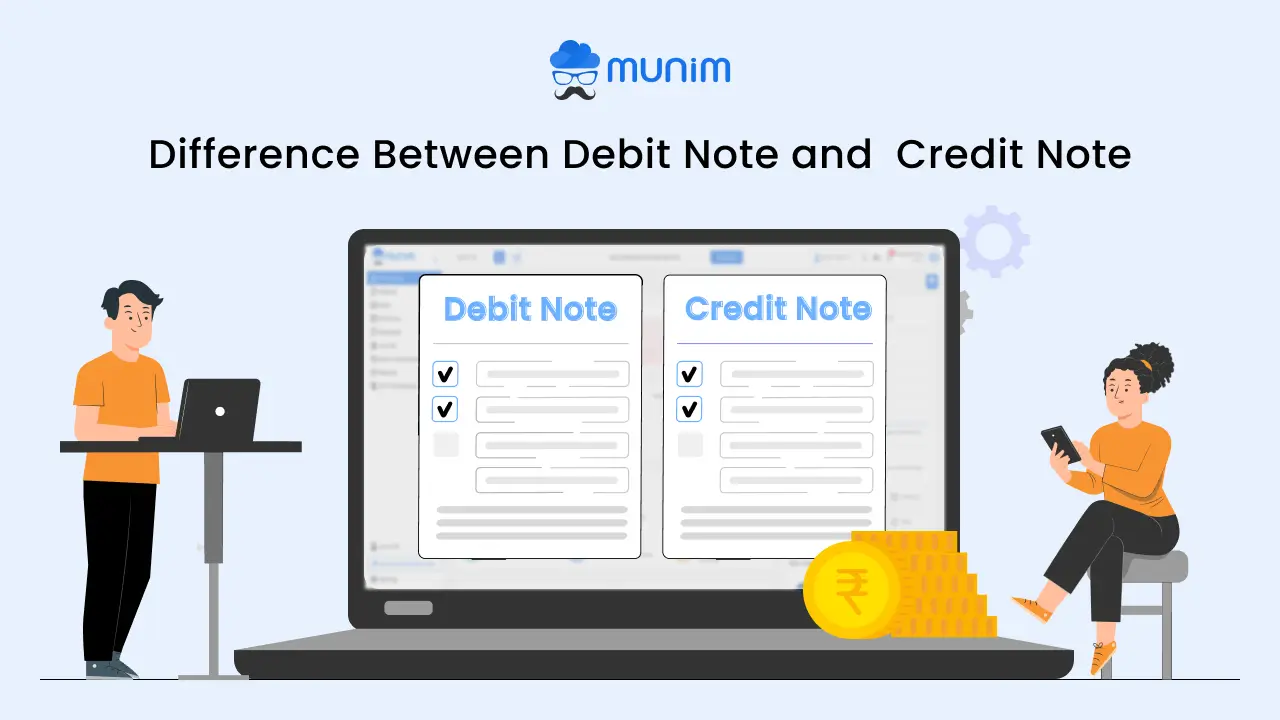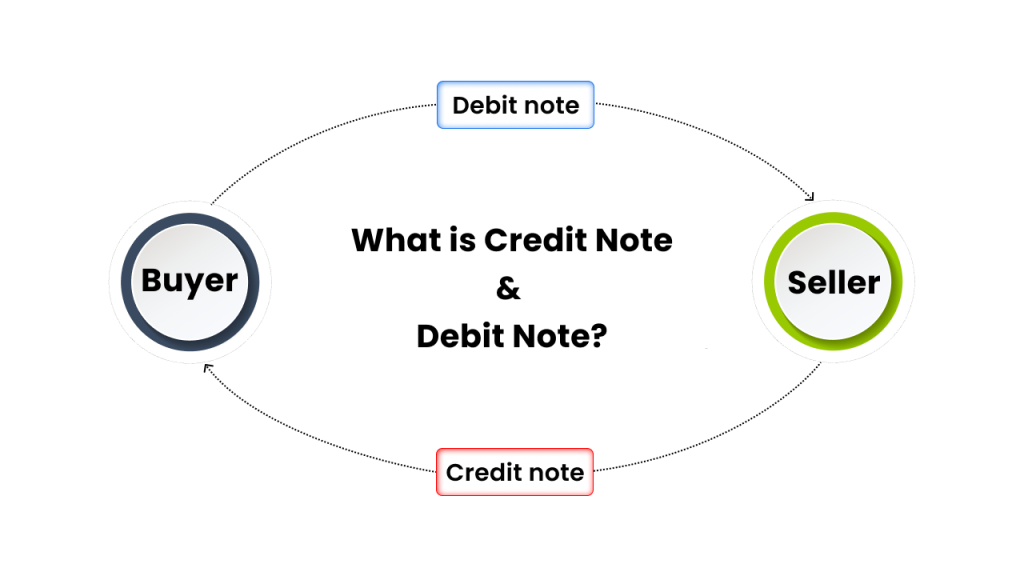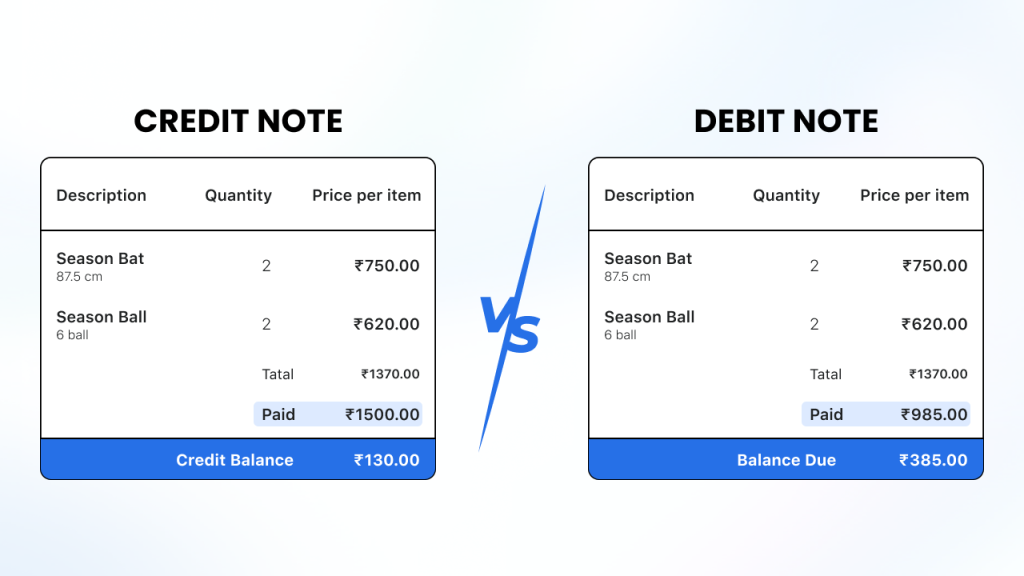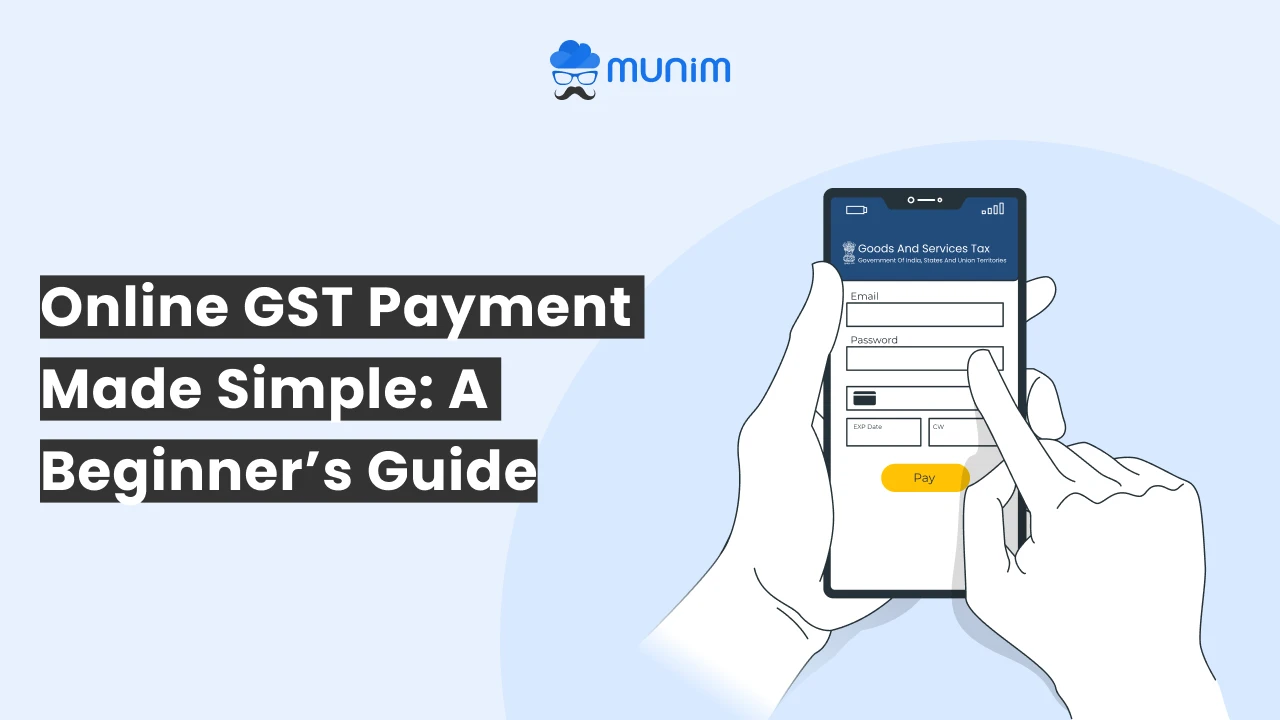Debit Note and Credit Note: What are the Key Differences?

It’s quite confusing when we talk about debit note and credit note. They might look similar; however, they have different roles to perform. These terms look fascinating, but, for business owners, it is crucial to know credit note and debit note for a seamless financial process.
Let’s scroll down below to understand these terminologies in detail.

Managing debit and credit notes manually is quite difficult, that’s where online accounting software comes into picture. With automated tracking, real-time insights, and instant updates; this cloud accounting solution simplifies the entire process. Let’s understand credit and debit notes in detail below!
What is a Credit Note?
A credit note refers to an acceptance report or an agreement/ undertaking between the seller and the buyer. If the buyer’s invoice contains an error, the seller shares a credit note as an apology. This note provides reimbursement details or offers store credits to the buyers.
Now, let’s roll down to understand the debit note’s meaning.
What is a Debit Note?
Debit note is nothing but a legal return document which is shared by the buyer to the seller/ supplier. It is also known as debit memo. Generally, if the customer finds defects in the product purchased, he sends a specific message which is a debit note to the seller. This proves that the product does not meet the expectations of a buyer and thus he has asked for a refund.
Debit Note Vs Credit Note
We have seen the credit note and debit note meanings above, now let’s check out the difference between debit note and credit note. Scroll down for details.

| Category | Debit Note | Credit Note |
| Meaning | It says you owe money to someone | It says someone owes you money |
| Used By | Generally, buyers use Debit note | Normally, sellers leverage credit note |
| When should I used It | If you have purchased a product on credit, you will need debit notes | When you return the purchased product to the seller, her gives a credit note to you |
| Examples | Suppose you have ordered a T-shirt and the quality is not good so you want to return it. This time you will get debit note. | Consider that you return a T-shirt to the seller as it does not satisfy your requirements and request a refund. The seller will give you a credit note for this. |
| Markings | Debit Notes have blue ink on them | Credit notes are marked with red ink |
| What it Depicts | It represents the buyer has paid money | It depicts someone has paid money back to you |
| Where are they Recorded | They are recorded in Purchase Return Books | They are recorded in Sales Return Books |
| What it Does | It reduces the money you have to pay to someone | It reduces the amount someone has to pay to you |
| Making an Entry | It like keeping a record of money you paid | It’s similar to maintaining a record of money paid back to you |
Hopefully, you have understood the difference between credit note and debit note!
When should you use a Debit Note and Credit Note?
- Debit Note Use
- Rising Taxable Amount: When you are willing to raise the amount of supply, you can issue a GST debit note.
- Increasing GST applied to the invoice: Do you think GST levied on the invoice needs to be raised? Leverage GST Debit note to help you with this. You can also go ahead with GST billing software that can assist you with debit and credit notes.
- Credit Note Use
- Returns or inadequate supplies: If the recipient doesn’t find the goods appropriate, it’s time to get a GST credit note.
- Reduction in Taxable Amount: When you plan to scale back the taxable supply amount, the GST credit note is your companion.
- Reduce Chargeable GST Amount: Want to lower down the GST rate or value that is applied on an invoice? GST Credit note is your rescue.
Read More: Guide On Invoice Management For New-Age Companies
Information to Be Displayed on Debit and Credit Notes
Hold on! Before you begin writing credit note and debit note: Here’s what you should have:
- Label: Add label to your document as “updated invoice” or “supplementary invoice.”
- Supplier’s Contact Details: Enter supplier’s name and GSTIN number
- Unique Serial Number: Add a unique number that is a mix of alphabets, numbers, and special characters.
- Issuance Date: Add the date of issuance to inform when the note was created.
- Recipients Details: Enter name, postal details, and GSTIN of registered recipients. For those who are unregistered add their delivery address and zip codes.
- Tax Invoice: Tax details like serial number, date, taxable value, tax rate, and tax credit/ debit recipient details form the crux of these notes.
- Signature: Add authorized signatures to seal the deal.
Key Points
- A debit note is similar to a receipt that is leveraged for returning merchandise or making payments.
- A credit note is same as seller’s way of notifying that he has received the returned item ad owes money pack to the customer.
- Munim accounting software is your new assistant for keeping a check on financial stuff.
Conclusion
Hopefully, you have enjoyed reading the blog on Debit and Credit Notes. Comment your queries below and we will answer them.
If you are looking for efficient financial management, sign up to Munim accounting and billing software immediately!
FAQs
- Who issues a credit note?
A credit note is issued by the seller saying the customer would receive a refund for the item returned.
- What is a three-way match?
A three-way match compares the supplier’s invoice, product receipts, and purchase order to ensure a perfect match before approving the invoice.
- Who issues a debit note?
Generally, It is a customer or a buyer who issues a debit note.






